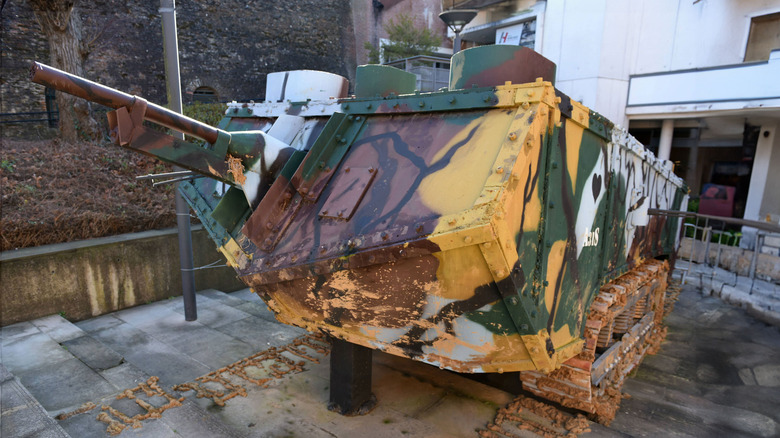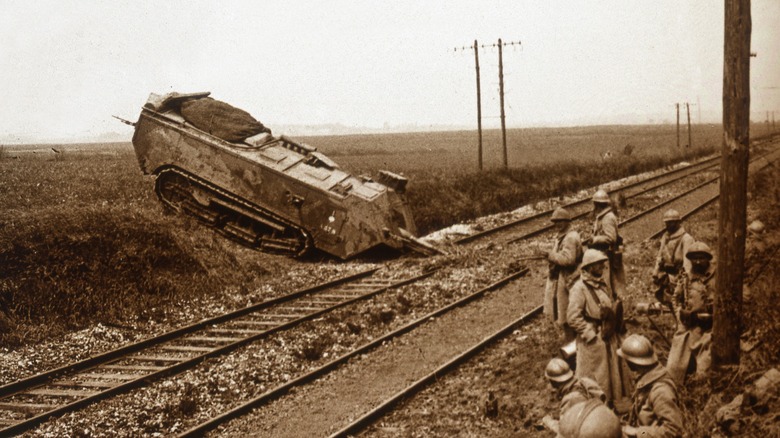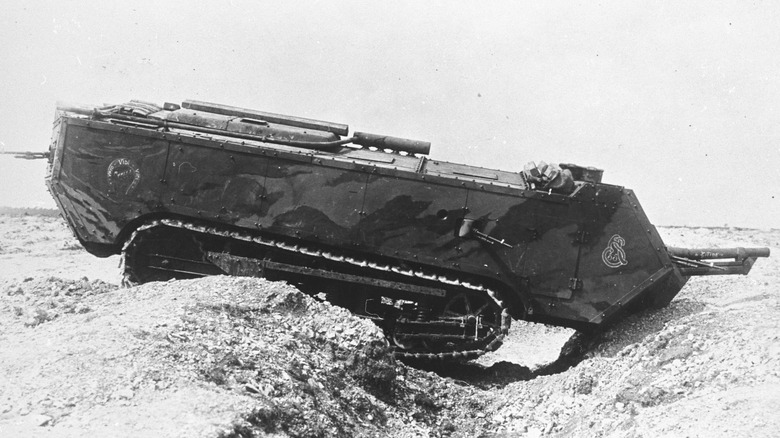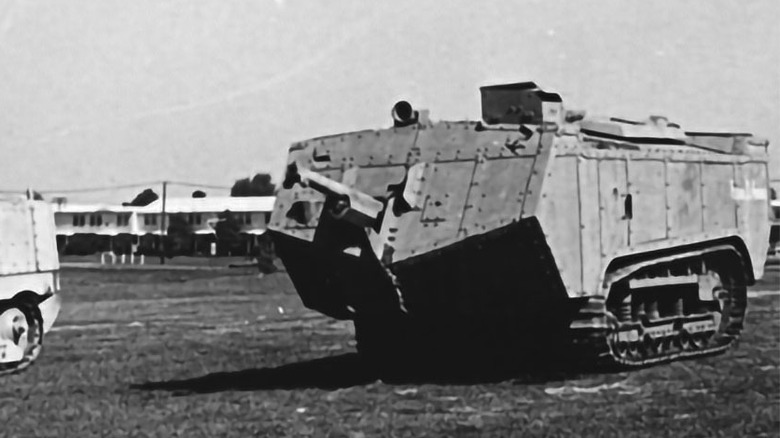Why The French Saint-Chamond Tank Is Considered One Of The Worst Of WWI
At the time, perhaps no other invention was more feared than the first armored tanks deployed during World War I. Capable of deflecting small arms and rifle fire while traversing the deadly zone between trenches referred to as "No man's land," models like the British Mark IV and France's Renault FT would make up the foundations for military tank design as we know it today.
However, before these iconic tanks would go on to make their mark on the field of combat, they were preceded by other, lesser-known variations, with some of the earliest iterations possessing severe design flaws. The Saint-Chamond, manufactured in 1917 by France, was one such tank that failed to live up to its creator's lofty ambitions.
Though the Saint-Chamond was a seemingly imposing force, it would not go on to be the armored tank that would dominate the battlefield for the French. That would instead be the compact Renault FT light tank, which would go on to help bring an end to the war in 1918.
The Saint-Chamond was developed in response to the Schneider CA1
Though the Schneider CA1 would be France's first tank developed for World War I, both that tank and the Saint-Chamond would eventually be considered design failures. Produced by the French military at the foundry and steelworks factory in Saint-Chamond, around 400 of the tanks would ultimately be manufactured by the war's end.
The Saint-Chamond weighed 23 tons, notably heavier than the Schneider, but was longer, making it, in theory, more capable of driving over trenches. With a 90hp engine, the rudimentary design was capable of a top speed of 5mph, which would slow to a 2.5mph crawl on unpaved terrain.
However, even though the Saint-Chamond lacked mobility, it would still prove useful, at least to some degree, as the 75mm front cannon was powerful enough to make the early design a formidable stationary gun. It also possessed four 8mm machine guns, which made it quite fearsome against infantry forces.
Though it was one of the earliest examples of an armored vehicle, the 17-19.5mm armor was only tough enough to protect from small arms and rifle fire, making the tank vulnerable to armor-piercing rounds and artillery. This, however, would not be the only reason that would ultimately cause the Saint-Chamond to be viewed as a failure by most military experts.
There were major design flaws with the Saint-Chamond tank
The first Saint-Chamond tanks would see battle on May 5, 1917, at the Moulin de Laffaux, where 22 of the tanks would be deployed. Constructed with American Holt tractor tracks, it was clear from the onset that the Saint-Chamond French tank would be unsuitable for certain combat scenarios. Both the Saint-Chamond and Schneider French tanks lacked suspensions, making them much less useful on rugged and off-road terrain.
Worse yet, though the Saint-Chamond had a long-form factor to help it traverse over the top of trenches, its front-heavy design and relatively tiny Holt tracks would cause the tank to get stuck in potholes and wider trenches. This utter lack of mobility made the tank a sitting duck.
Lastly, much like the Schneider, the tank was dark and noisy for the eight crewmembers stuck inside. Petrol and cordite fumes made conditions within the hulking machine nearly unbearable. Though the Saint-Chamond did possess a fairly sophisticated mechanical design that included two electric motors and a thermal generator, this design complexity also set it back in terms of maintenance during operations.
Bigger is not always better
The Saint-Chamond had many design flaws that would make it unfit. It was eventually scrapped for the more mobile and agile Renault FT light tank. Unlike the Saint-Chamond, which had a complex and confusing power system, Renault's tanks came equipped with the more simple but powerful 4.5 liter 4-cylinder Renault engine.
The FT's smaller design made it more agile and prevented it from getting stuck in the mud and potholes like the Saint-Chamond. In total, over 3,500 Renault FT tanks would be manufactured by the end of the war.
Today, the French armed forces use its fourth generation of tanks, the Leclerc XLR. Recently enhanced and equipped with a SACM V8X-1500 Hyperbar diesel engine with 1,500 hp and capable of cross-country speeds of up to around 33 miles-per-hour offroad, it's clear how far military technology has come since the 1910s when the Saint-Chamond was designed and manufactured.



